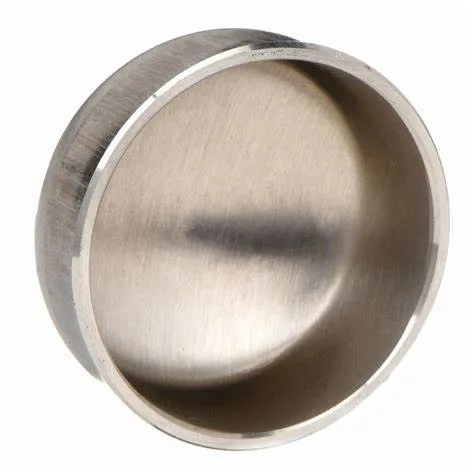-
Cangzhou Yulong Steel Co., Ltd.
-
Phone:
+86 13303177267 -
Email:
admin@ylsteelfittings.com
- English
- Arabic
- Italian
- Spanish
- Portuguese
- German
- kazakh
- Persian
- Greek
- French
- Russian
- Polish
- Thai
- Indonesian
- Vietnamese
- Zulu
- Korean
- Uzbek
- Hindi
- Serbian
- Malay
- Ukrainian
- Gujarati
- Haitian Creole
- hausa
- hawaiian
- Hebrew
- Miao
- Hungarian
- Icelandic
- igbo
- irish
- Japanese
- Javanese
- Kannada
- Khmer
- Rwandese
- Afrikaans
- Albanian
- Amharic
- Armenian
- Azerbaijani
- Basque
- Belarusian
- Bengali
- Bosnian
- Bulgarian
- Catalan
- Cebuano
- China
- China (Taiwan)
- Corsican
- Croatian
- Czech
- Danish
- Esperanto
- Estonian
- Finnish
- Frisian
- Galician
- Georgian
- Kurdish
- Kyrgyz
- Lao
- Latin
- Latvian
- Lithuanian
- Luxembourgish
- Macedonian
- Malgashi
- Malayalam
- Maltese
- Maori
- Marathi
- Mongolian
- Myanmar
- Nepali
- Norwegian
- Norwegian
- Occitan
- Pashto
- Dutch
- Punjabi
- Romanian
- Samoan
- Scottish Gaelic
- Sesotho
- Shona
- Sindhi
- Sinhala
- Slovak
- Slovenian
- Somali
- Sundanese
- Swahili
- Swedish
- Tagalog
- Tajik
- Tamil
- Tatar
- Telugu
- Turkish
- Turkmen
- Urdu
- Uighur
- Welsh
- Bantu
- Yiddish
- Yoruba

Dec . 06, 2024 06:39 Back to list
stainless pipe tig welding
TIG Welding of Stainless Steel Pipe A Comprehensive Guide
TIG welding, or Tungsten Inert Gas welding, has gained popularity as a method for joining stainless steel pipes due to its precision and versatility. This welding technique is known for producing high-quality, clean welds with minimal spatter, making it ideal for applications where appearance is critical, such as in the food and pharmaceutical industries. In this article, we will explore the intricacies of TIG welding stainless steel pipes, from the equipment required to the steps involved in the welding process.
Understanding TIG Welding
TIG welding employs a non-consumable tungsten electrode to produce the weld. The process involves an inert gas, typically argon, which shields the weld area from atmospheric contamination—oxygen and nitrogen, which can lead to defects. This makes TIG welding particularly effective for stainless steel, a material that is susceptible to oxidation.
Equipment Needed for TIG Welding Stainless Steel
To successfully TIG weld stainless steel pipes, you'll need the following equipment and materials
1. TIG Welder A quality TIG welder capable of delivering the required amperage for the thickness of the stainless steel you are working with. 2. Tungsten Electrodes Typically, 2% thoriated or lanthanated tungsten is used. The choice depends on the specific application, with lanthanated tungsten being favored for its higher performance.
3. Filler Rod If you are joining pipes or filling gaps, a compatible stainless steel filler rod must be used, often specified as ER308L for the common stainless steel grades.
4. Protective Equipment This includes welding helmets (with appropriate shade), gloves, and protective clothing to shield from UV radiation and sparks.
5. Gas Supply An argon gas cylinder with a flowmeter for regulating the gas flow to protect the weld pool.
6. Cleanliness Supplies Stainless steel surfaces should be clean to prevent contamination. Tools for cleaning may include solvents or brushes specifically designed for stainless steel.
Preparing for the Weld
Preparation is key to achieving successful welds. Start by cutting the stainless steel pipes to the desired length, ensuring the edges are smooth and well-fitted. If necessary, bevel the pipes to create a groove that allows for better penetration. Clean the surfaces to remove any oils, rust, or contaminants, as these can lead to defects in the weld.
stainless pipe tig welding

Next, set up the TIG welder according to the specifications of the materials being welded. Adjust the amperage based on the thickness of the pipe; generally, a lower amperage is ideal for thinner materials.
The Welding Process
Once the setup is complete, proceed with the welding
1. Begin the Arc Touch the tungsten electrode to the workpiece and quickly pull it away to create an arc. This initiates the heating process.
2. Manipulate the Weld Pool Move the electrode in a circular or linear motion to create a pool of molten material. The key is to maintain a steady hand to control the weld pool's size.
3. Add Filler Rod If required, introduce the filler rod into the weld pool while maintaining the arc. This process requires coordination to ensure that the rod melts uniformly and blends seamlessly with the base material.
4. Control Your Speed The speed of your movement affects the weld's appearance and structural integrity. A slower speed allows for deeper penetration, while a faster speed may result in a flatter weld.
5. Finish the Weld Once you have filled the joint, move the electrode away from the weld area while maintaining the gas flow to ensure the weld cools correctly without contamination.
Post-Welding Considerations
After the weld is complete, it is crucial to allow the workpiece to cool naturally. Avoid rapid cooling, which can lead to stress and cracking. Depending on the application, you may need to perform post-weld treatments, such as grinding, polishing, or passivation, to enhance the corrosion resistance of the weld.
Conclusion
TIG welding of stainless steel pipes may require time and practice to master, but the results can be profoundly rewarding. With its ability to deliver clean, precise welds, TIG welding is an excellent choice for a wide range of applications in various industries. By understanding the equipment, preparation, and techniques involved, you can develop your skills and achieve outstanding results in your welding projects.
Latest news
-
ANSI 150P SS304 SO FLANGE
NewsFeb.14,2025
-
ASTM A333GR6 STEEL PIPE
NewsJan.20,2025
-
ANSI B16.5 WELDING NECK FLANGE
NewsJan.15,2026
-
ANSI B16.5 SLIP-ON FLANGE
NewsApr.19,2024
-
SABS 1123 FLANGE
NewsJan.15,2025
-
DIN86044 PLATE FLANGE
NewsApr.19,2024
-
DIN2527 BLIND FLANGE
NewsApr.12,2024
-
JIS B2311 Butt-Welding Fittings LR/SR 45°/90° /180°Seamless/Weld
NewsApr.23,2024











